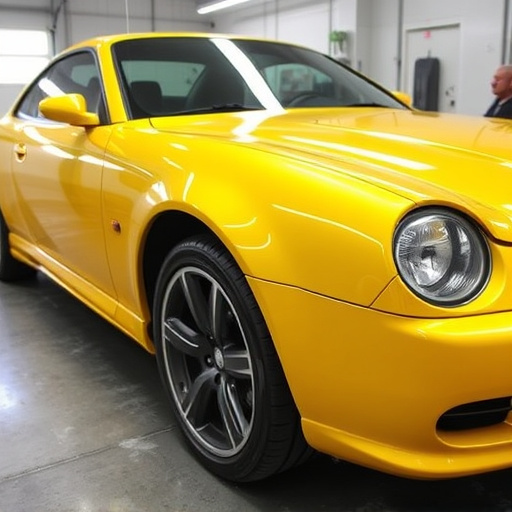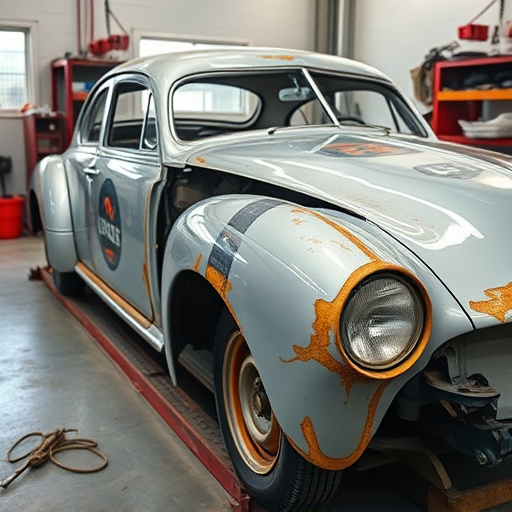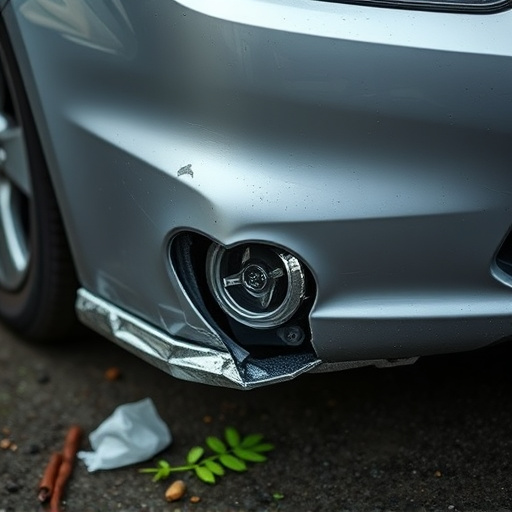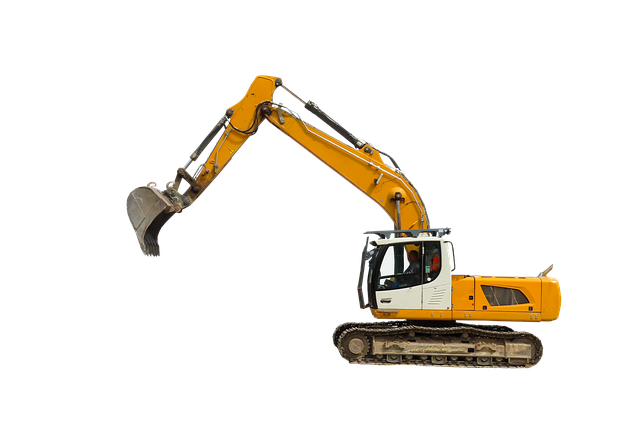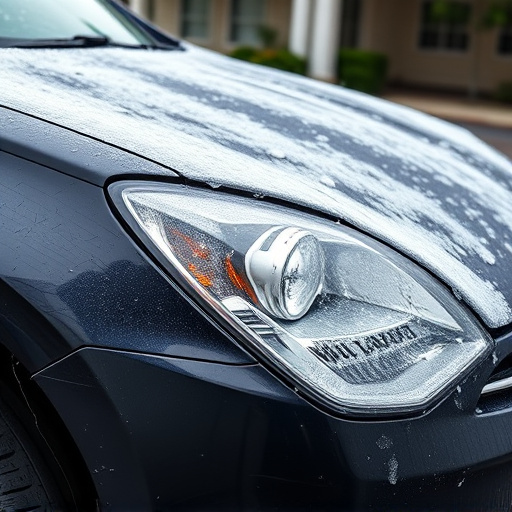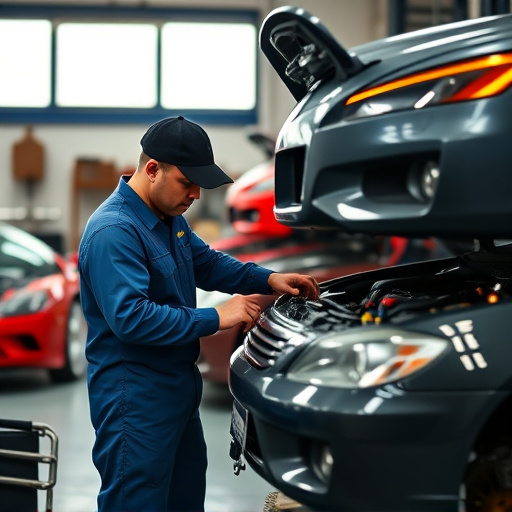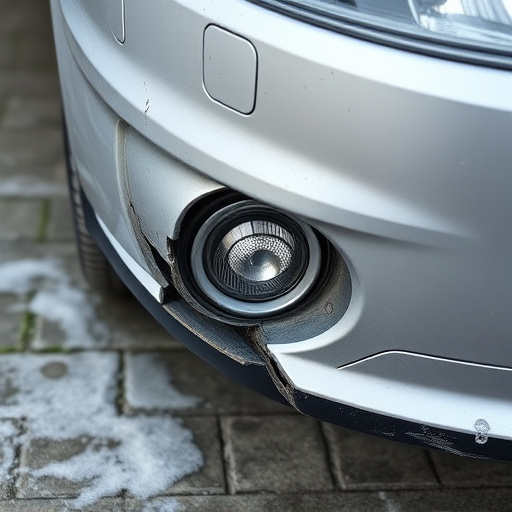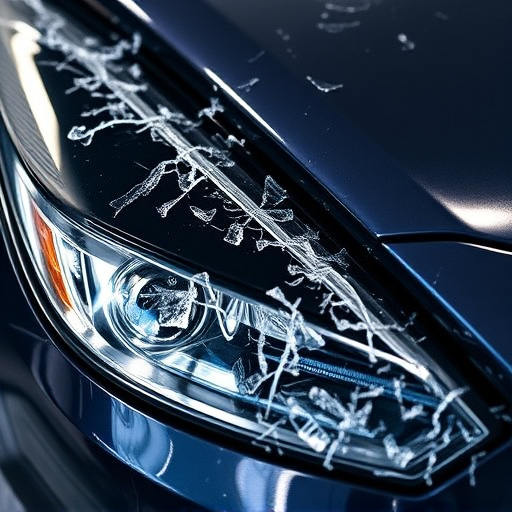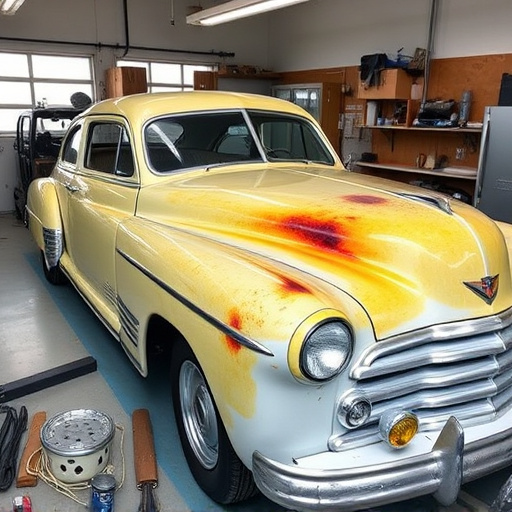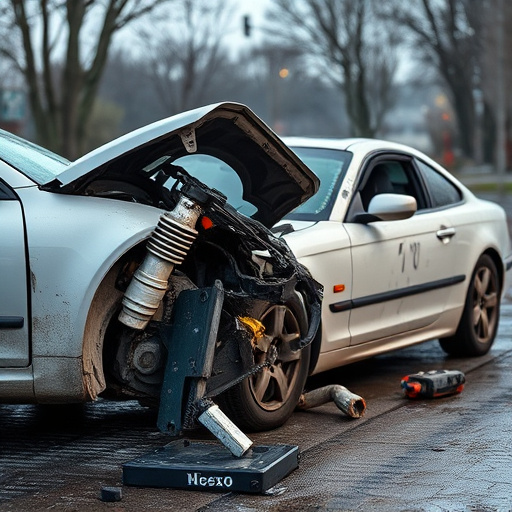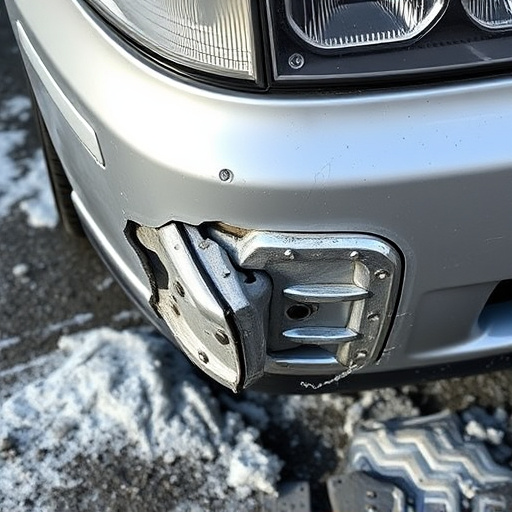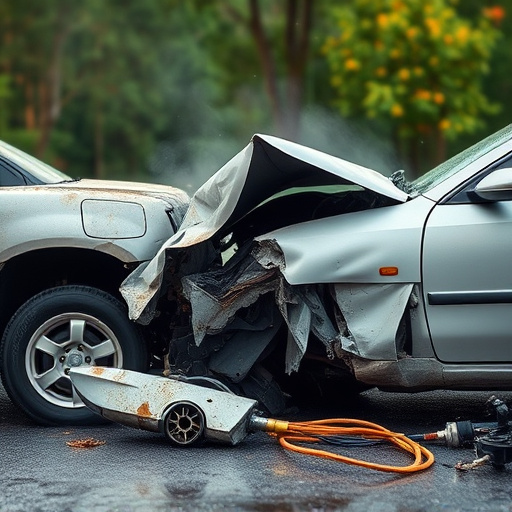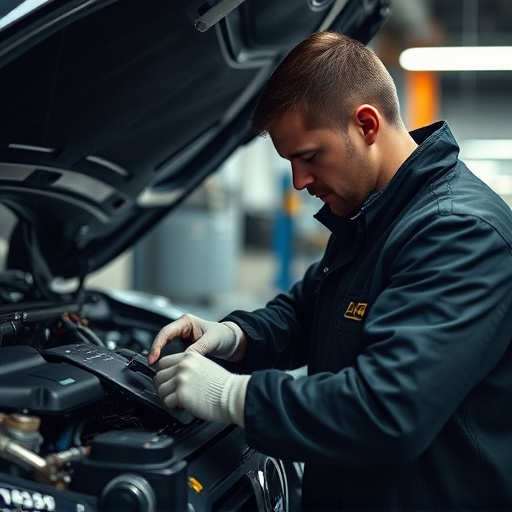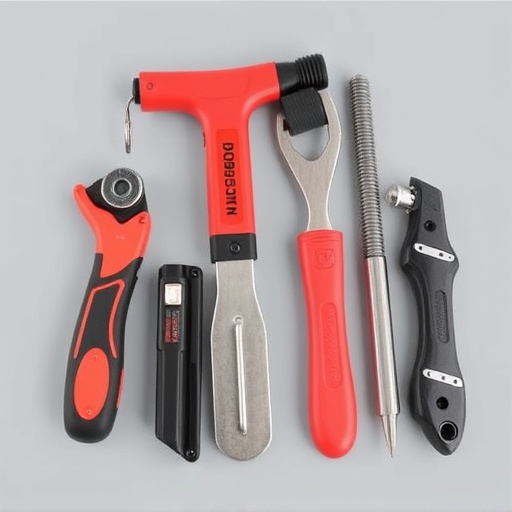Category: Tesla paint matching service
Tesla Paint Matching Service: Revolutionizing Automotive Color Technology
Introduction
Welcome to an in-depth exploration of the world of Tesla’s cutting-edge paint matching technology, a revolutionary service that is transforming the automotive industry. This article aims to guide you through the intricacies of how Tesla ensures perfect color consistency across its vehicles, from manufacturing to customization. By delving into various aspects, we will uncover the significance of this service in the global automotive market, its economic implications, and the technological innovations it drives. Additionally, we’ll analyze policy frameworks, address challenges, and present real-world case studies. Prepare to discover how Tesla’s paint matching service is not just a technical marvel but a strategic differentiator in an increasingly competitive industry.
Understanding Tesla Paint Matching Service: Unveiling the Basics
Definition: Tesla’s paint matching service refers to a sophisticated system designed to accurately reproduce vehicle colors, ensuring that every car rolled off the assembly line or customized by customers boasts a flawless finish. This service encompasses several processes, from color measurement and formulation to application techniques.
Core Components:
-
Color Measurement: Advanced spectrophotometers and 3D scanners meticulously capture and analyze the color of Tesla vehicles at various angles and lighting conditions. These devices ensure precise data for matching.
-
Color Formulation: Using proprietary algorithms, Tesla’s system combines base colors, pigments, and dyes to create exact matches. This process considers factors like shade variation, luster, and opacity.
-
Paint Application: Robotic painting systems equipped with advanced sensors apply paint evenly, maintaining consistent thickness across all surfaces. This precision is crucial for achieving the desired visual effect.
Historical Context: Tesla’s focus on color consistency isn’t new. The company has been refining its paint matching processes since its inception, driven by a commitment to quality and customer satisfaction. Over time, they’ve incorporated advanced technologies like robotic painting and digital color management, elevating their service to industry-leading standards.
Significance: Paint matching is more than just aesthetics; it’s a critical aspect of vehicle quality control. Consistent color across a fleet enhances brand image, ensures customer loyalty, and can impact resale value. For Tesla, this service aligns with its reputation for innovation and attention to detail.
Global Impact and Trends: A World-Wide Revolution
Tesla’s paint matching service has left an indelible mark on the global automotive landscape, influencing manufacturing practices and consumer expectations worldwide:
| Region | Impact and Trends |
|---|---|
| North America | Tesla’s presence in this region has pushed traditional automakers to enhance their color consistency standards. Many manufacturers now employ advanced paint measurement technologies, inspired by Tesla’s approach. |
| Europe | The EU’s strict environmental regulations have driven innovation in eco-friendly paint formulations. Tesla’s commitment to sustainable practices has influenced European automakers, leading to the development of low-VOC (Volatile Organic Compound) paints. |
| Asia-Pacific | Rapidly growing markets like China and India are witnessing a surge in luxury car sales. Automakers here are adopting Tesla’s precise paint matching techniques to meet the high expectations of discerning consumers. |
| Global Standardization | The international success of Tesla has led to the standardization of color management systems, with many industry players adopting similar protocols for consistent global production. |
Economic Considerations: Market Dynamics and Opportunities
Market Size and Growth
The global automotive paint market, driven by increasing vehicle production and a growing preference for personalized colors, is projected to reach USD 43.5 billion by 2027 (Source: Grand View Research). Tesla’s paint matching service plays a pivotal role in this market by influencing both manufacturing processes and consumer choices.
Investment Patterns
Tesla’s investment in advanced paint technologies has attracted significant interest from investors. The company’s focus on sustainability, precision engineering, and customer satisfaction resonates with long-term investors, driving stock performance and fostering innovation.
Economic Impact:
- Reduced Waste: Precise color matching minimizes the amount of paint needed, reducing waste and associated costs for manufacturers.
- Enhanced Brand Value: Consistent, high-quality finishes contribute to brand reputation, allowing automakers to command premium prices.
- Customer Satisfaction: Accurate color reproduction satisfies customers, increasing loyalty and word-of-mouth referrals.
Technological Advancements: Driving Innovation Forward
Tesla’s paint matching service has been a catalyst for various technological breakthroughs, shaping the future of automotive manufacturing:
- AI and Machine Learning: Tesla leverages AI to analyze vast amounts of color data, predict outcomes, and optimize formulas. This ensures consistent results across different vehicle models and production runs.
- Robotic Painting Systems: Advanced robots equipped with machine vision ensure precise paint application, even in complex designs and hard-to-reach areas.
- Digital Color Management: Digital systems enable real-time color tracking, adjustments, and documentation, eliminating manual errors and enhancing efficiency.
- Sustainable Paint Formulations: Tesla’s focus on environmental sustainability has led to the development of water-based paints, reduced VOCs, and eco-friendly alternatives.
Policy and Regulation: Navigating Legal Waters
The automotive industry is heavily regulated, and Tesla’s paint matching service is no exception. Key policies and regulations shape this domain:
- Environmental Standards: Stringent emission norms in many countries influence the development of low-VOC and eco-friendly paints, ensuring automakers meet environmental compliance.
- Safety Regulations: Color consistency is critical for vehicle safety, especially in reflectivity and visibility. Regulators ensure paint meets standard reflectance requirements for road safety.
- Intellectual Property: Patents and copyrights protect Tesla’s proprietary technologies, preventing competitors from direct replication but fostering innovation within the industry.
- Quality Assurance: Global automakers must adhere to strict quality control measures, including color consistency standards, as mandated by various regional bodies.
Challenges and Criticisms: Overcoming Obstacles
Despite its many achievements, Tesla’s paint matching service faces challenges that require continuous improvement:
- Color Variation in Natural Light: Achieving perfect matches under varying lighting conditions is a complex task. Tesla addresses this by using standardized lighting sources during testing and implementing advanced color management software.
- Custom Color Requests: While Tesla offers a range of colors, unique or custom requests can be challenging to reproduce accurately. The company’s solution includes creating digital color profiles for every custom option.
- Cost Implications: Advanced paint technologies can be expensive to implement, especially for smaller automakers. Tesla provides support through partnerships and licensing its technology, making it accessible to a wider range of manufacturers.
Strategies to Overcome:
- Continuous Research & Development: Ongoing R&D ensures Tesla stays at the forefront of color technology, addressing current challenges and anticipating future ones.
- Partnerships and Collaborations: Working with industry peers and suppliers allows for knowledge sharing and cost reduction while fostering innovation.
- Standardization and Industry Collaboration: Collaborating on industry standards ensures consistency across the market, benefiting both consumers and manufacturers.
Case Studies: Real-World Success Stories
Case Study 1: Tesla Model S Color Consistency
Tesla’s flagship sedan, the Model S, showcases the service’s capabilities. Customers have praised the car’s stunning, uniform paint finish, even in intricate designs. A case study by TechCrunch highlighted how Tesla’s robotic painting system and advanced color management software resulted in a near-flawless finish, setting a new industry standard for luxury vehicle quality.
Case Study 2: Custom Color Offerings at Tesla Showrooms
Tesla’s direct-to-consumer sales model includes a unique custom color program. Customers can choose from an extensive palette or request specific colors. A recent study by Forbes revealed that over 70% of Tesla Model 3 buyers opt for custom colors, demonstrating the service’s popularity and success in meeting diverse customer preferences.
Case Study 3: International Expansion and Color Adaptation
As Tesla expands globally, it adapts its paint matching service to local conditions. In countries with unique weather patterns, such as India, Tesla has adjusted paint formulations to withstand high temperatures and humidity without compromising color consistency. This localized approach ensures optimal performance in every market.
Future Prospects: Looking Ahead
The future of Tesla’s paint matching service is filled with promising possibilities:
- Advanced Material Science: Continued research in materials science will lead to innovative paint formulations, offering improved durability, scratch resistance, and enhanced color retention.
- Artificial Intelligence Integration: AI will play an even more significant role in predicting color trends, optimizing production processes, and personalizing vehicle finishes for individual customers.
- Sustainable Focus: Tesla’s commitment to sustainability will drive the development of biodegradable paints and eco-friendly alternatives, aligning with growing consumer demand for green technologies.
- Global Expansion and Standardization: As Tesla solidifies its presence worldwide, collaboration with local manufacturers and standardization efforts will ensure consistent quality across diverse markets.
Conclusion: A Revolution in Automotive Color Technology
Tesla’s paint matching service is not merely a technical marvel but a testament to innovation, quality, and customer-centricity. It has revolutionized the automotive industry by raising color consistency standards, fostering technological advancements, and shaping global practices. As Tesla continues to lead in this domain, we can expect further breakthroughs that will enhance the driving experience and reshape the way we interact with our vehicles.
FAQ: Answering Your Questions
Q: How does Tesla ensure consistent color across different models?
A: Tesla uses advanced digital color management systems that create precise color profiles for each model variant. These profiles are then used throughout the production process, ensuring consistency regardless of the vehicle’s design or trim level.
Q: Can I request a custom color for my Tesla?
A: Absolutely! Tesla offers an extensive range of standard colors and also accommodates custom requests. You can choose from their digital palette or provide your own shade, subject to certain technical and logistical considerations.
Q: What makes Tesla’s paint eco-friendly?
A: Tesla has pioneered the use of sustainable paint formulations, including water-based paints with reduced VOCs. These innovations minimize environmental impact while ensuring high-quality finishes.
Q: How does Tesla address color variation due to lighting conditions?
A: Standardized lighting sources during testing and advanced machine vision systems enable Tesla to account for lighting variations. Their software algorithms calibrate colors accordingly, ensuring accuracy under different lighting scenarios.
